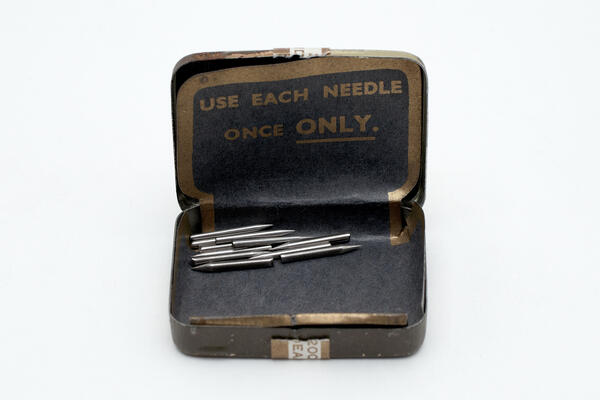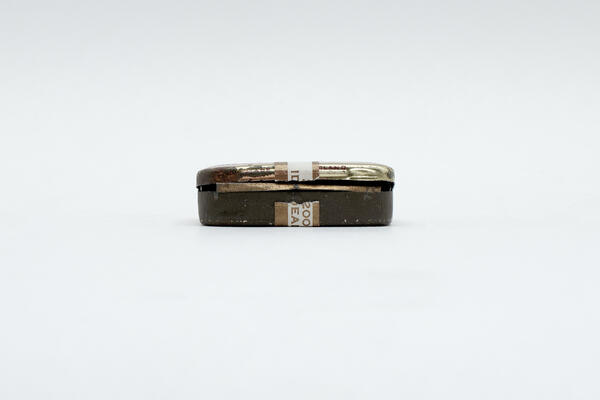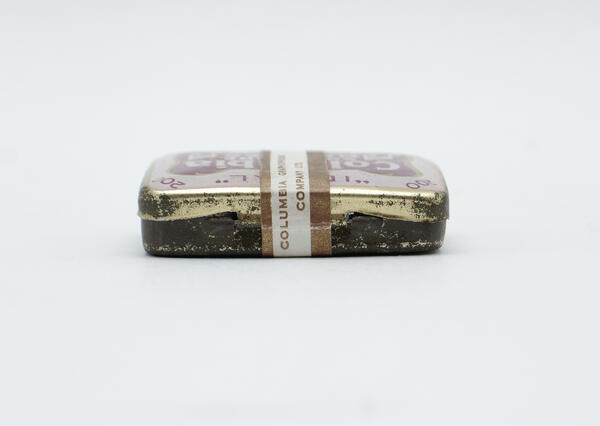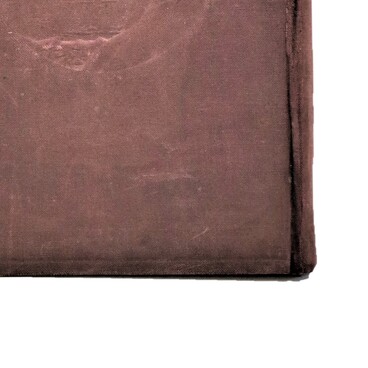A gramophone needle is a pointed cylinder that attaches to the membranes of a gramophone. When the record is rotated, the tip of the needle moves along the groove with the sound recording and transmits vibrations to the membrane of the sound box. They are converted into sound waves that are amplified with the help of the horn.
This set of needles was made by the Columbia Graphophone Company in the United Kingdom. It was founded in 1922 as a branch of the American company of the same name, but later merged with other major labels and was transformed into EMI. In the middle of the 20th century, the Columbia Graphophone Company was the flagship of the mass music industry in England.
Invented by Thomas Edison in 1877, the phonograph is considered to be the predecessor of the gramophone. This was a revolution in the history of sound recording, as it was previously deemed impossible to preserve and reproduce sound. Edison presented the phonograph as the first audiobook for blind people, as well as a replacement for stenographers and an alarm clock.
Ten years later, the gramophone was created on the basis of the phonograph. What’s interesting, this device for listening to music literally translates from Greek as “voice writing”. In 1887, the device was introduced to the public and patented by the American inventor of German origin Emil Berliner. The record became the first ever medium for storing sound and marked the starting point of the history of popular music culture.
With the release of the ten-song record by the Italian tenor Enrico Caruso in 1902, the gramophone became extremely popular. It was a great success for both the singer and the musical device. Emil Berliner continued to influence the emerging music industry: he came up with the idea to pay singers and musicians who recorded their music.
The gramophone quickly gained mass recognition. There was a model of gramophone to satisfy any taste and price point — from inexpensive and affordable to exclusive luxury devices made of mahogany and pure silver. In the early 20th century, a custom gramophone could set one back several thousand rubles — for comparison, a cow cost about 50 rubles. Later, gramophones and pathephones were replaced by electrophones that were powered by electricity and had an improved acoustic system.






